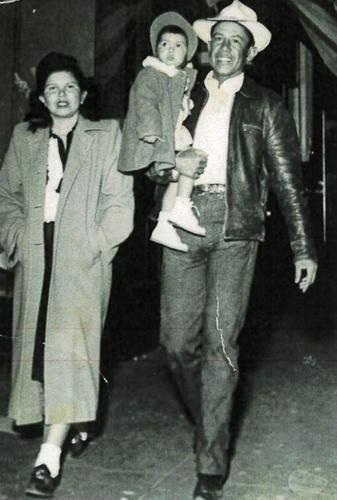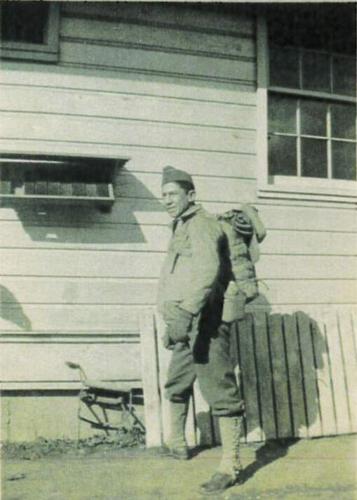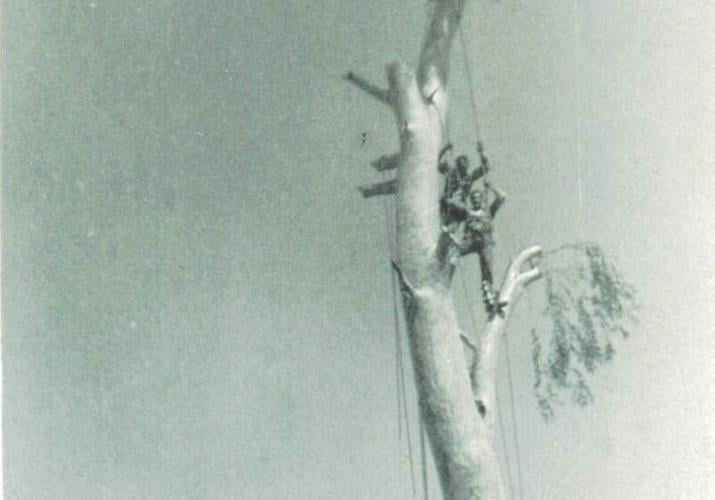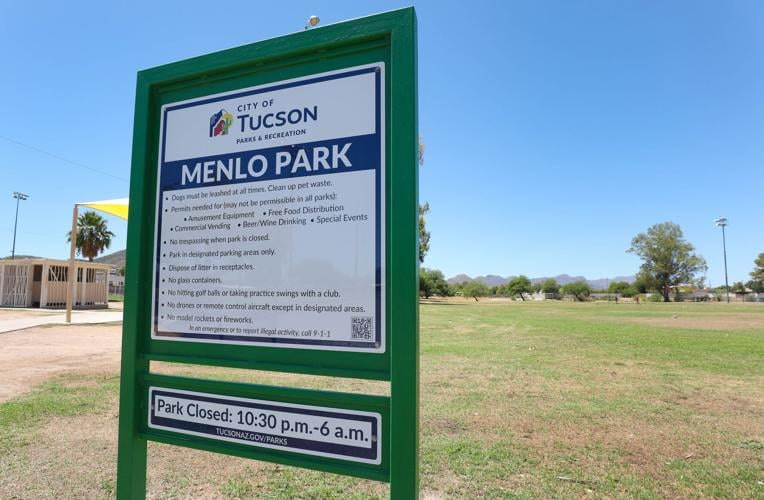Since a Tucson City Council action in 1982, a city park west of downtown has been named “Menlo Park, Dedicated to Edward Moreno.”
Here is the story of how Edward S. “Tats” Moreno came to be honored in that way.
He was born to Francisco, a miner, and Ignacia (Jurahui) Moreno in 1919 in the small mining town of Rosemont, in the Santa Rita Mountains south of Tucson.
In 1924 Francisco died, leaving his wife and six children to fend for themselves. This resulted in the family relocating to Tucson from Patagonia, likely for better work opportunities. By 1930, Ignacia and family were residing at 575 S. Meyer St. She was doing washing from home and her daughter Manuela was doing housework for another family to make money.
In the next four years Moreno would lose his sister Manuela and mother Ignacia, which forced him to drop out of school at about 14 or 15 years old to help his sister Tillie and brother Mike by finding work.
At one point he joined the Civilian Conservation Corps, a work relief program established by Congress to create work during the Great Depression. The two projects he was known to have worked on were constructing roads connected with Madera Canyon in the Santa Rita Mountains and on Mount Lemmon.

Edward and Frances Moreno with daughter Sylvia on the streets of Tucson in 1949.
He later worked for Southern Pacific Railroad.
Moreno joined the U.S. Army after the Japanese attack on Pearl Harbor, formally enlisting in January 1942 at Fort Bliss, El Paso, Texas. After basic training at Camp Grant, Rockford, Illinois, and time served at Fort Benjamin Harrison in Indianapolis, he ended up at Fort Benning in Columbus, Georgia, for paratrooper training.
After graduation he served with the 17th Airborne Division and did a total of about 17 jumps. On one of them, he was wounded in a combat jump over the Rhine River in Europe. As a result he was awarded the Purple Heart.
After returning from overseas, Moreno attended a local dance where he met Frances, who also had been born in a small Arizona mining town; hers was Tiger. This meeting would lead to a wedding on Dec. 23, 1946, at Santa Cruz Catholic Church on South Sixth Avenue.

Edward Moreno at the Army barracks before shipping out in 1944.
Within a decade they would have children Sylvia, Edward Jr., Frank, and Virginia, and would be residing at 1346 W. Franklin St., in the Menlo Park neighborhood.
According to his son, Frank, “Around 1947, my father was handpicked by Gene C. Reid, head of the Tucson Parks Department (now Tucson Parks and Recreation). At that time, there were only a small amount of parks throughout Tucson but the city was growing and with it was the demand for more parks.
“Dad’s job was to plant the new trees and palms that were going into the new parks and keep them trimmed, and as a result he formed the original ‘Tree Trimmers’ crew, which included Ralph Sandoval and George Silvain. Later on, others such as Jose Chavarria and Patrick Bejarano came on board. He was also a ‘high climber’, which meant tall palm trees like the ones in front of Joel Valdez Library (downtown) had to be climbed to be trimmed by him.”
He continued, “During the 1960s and 1970s, he also headed the rose garden project at Reid Park. He would lead the meetings with several citizens attending and they would discuss planting, fertilizing and pruning methods. One of the participants during these early years was Tucson’s grand dame of fashion, the late Cele Peterson,” who is now the namesake of the Cele Peterson Rose Garden.

ABOVE: Edward Morenoand George Silvain trimming a tree for the city of Tucson in 1960. TOP RIGHT: Edward and Frances Moreno with daughter Sylvia on the streets of Tucson in 1949. RIGHT: Edward Moreno at the Army barracks before shipping out in 1944.
Frank also shared some of the dangers of his father’s work. “In 1962, dad fell from a cottonwood tree at Catalina Park on Fourth Avenue and spent several days in critical condition before recovering from his injuries. Then in 1973, while demonstrating the use of a chainsaw, a freak accident resulted in his face to be sliced almost in half. He again recovered from the wound and went back to work.”
In his spare time he was active in his community. For example, in the early 1960s, when the youngsters in the area, who belonged to Western Little League, lacked a baseball field to play on, Moreno helped lease land next to the Arizona State Schools for the Deaf and the Blind on West Speedway. Using his expertise, he guided construction of the baseball field, complete with concrete dugouts, a six-foot plywood outfield fence with billboard sponsors and advertisements, centerfield scoreboard, bleachers, a snack bar and an underground sprinkling system.
He was commonly seen, in the early mornings before going to work, on this field, known as Billy Bradley Memorial Field (named in honor of William J. Bradley Jr., a Little League star killed in 1961), making sure it remained in top shape for the local players.

Menlo Park, 325 N. Grande Ave., is open 6 a.m. to 10:30 p.m. and features basketball courts, grills, a pool, picnic tables, ramada, a playground, and soccer and softball fields.
After 34 years of dedicated service to the city of Tucson and the Parks Department, he retired in 1981. For his service, the mayor and City Council that year changed the name of Menlo Park at 325 N. Grande Ave. to Edward Moreno Park, but the following year changed it to “Menlo Park, Dedicated to Edward Moreno” as it still appears on the park sign.
Upon his retirement, Moreno immediately went out and purchased a motorhome to pursue one of his passions, fishing in Arizona lakes. He and his wife Frances would hit the road for weeks at a time. They would start their trip at the far south Parker Lake and work their way up north to Lake Pleasant north of Phoenix. His favorite lake was Rucker Lake in Cochise County. Another of his favorite fishing spots was Rocky Point in Sonora, Mexico, which he had frequented with fishing buddy Gene C. Reid (namesake of Reid Park) in the early ‘50s.
Another passion was spending time with the grandchildren. Grandson Michael Moreno couldn’t pronounce “tata,” a word for “grandpa” in Spanish, and instead would say “tats”. The other grandchildren, Frank S. Moreno, Anna Lisa Gastelum, Joey Robles, Andrew Robles and Ralph Felix, started calling him that and eventually everyone called him “Tats”.
Edward Silvas Moreno died on Oct. 8, 2008, at the age of 89.
As you drive by any of the scores of city parks throughout Tucson, chances are Moreno and his crew planted the trees that now stand.
When was Tucson "born"? Who helped dedicate Davis-Monthan airfield? See how well you know this small bit of Tucson history.









